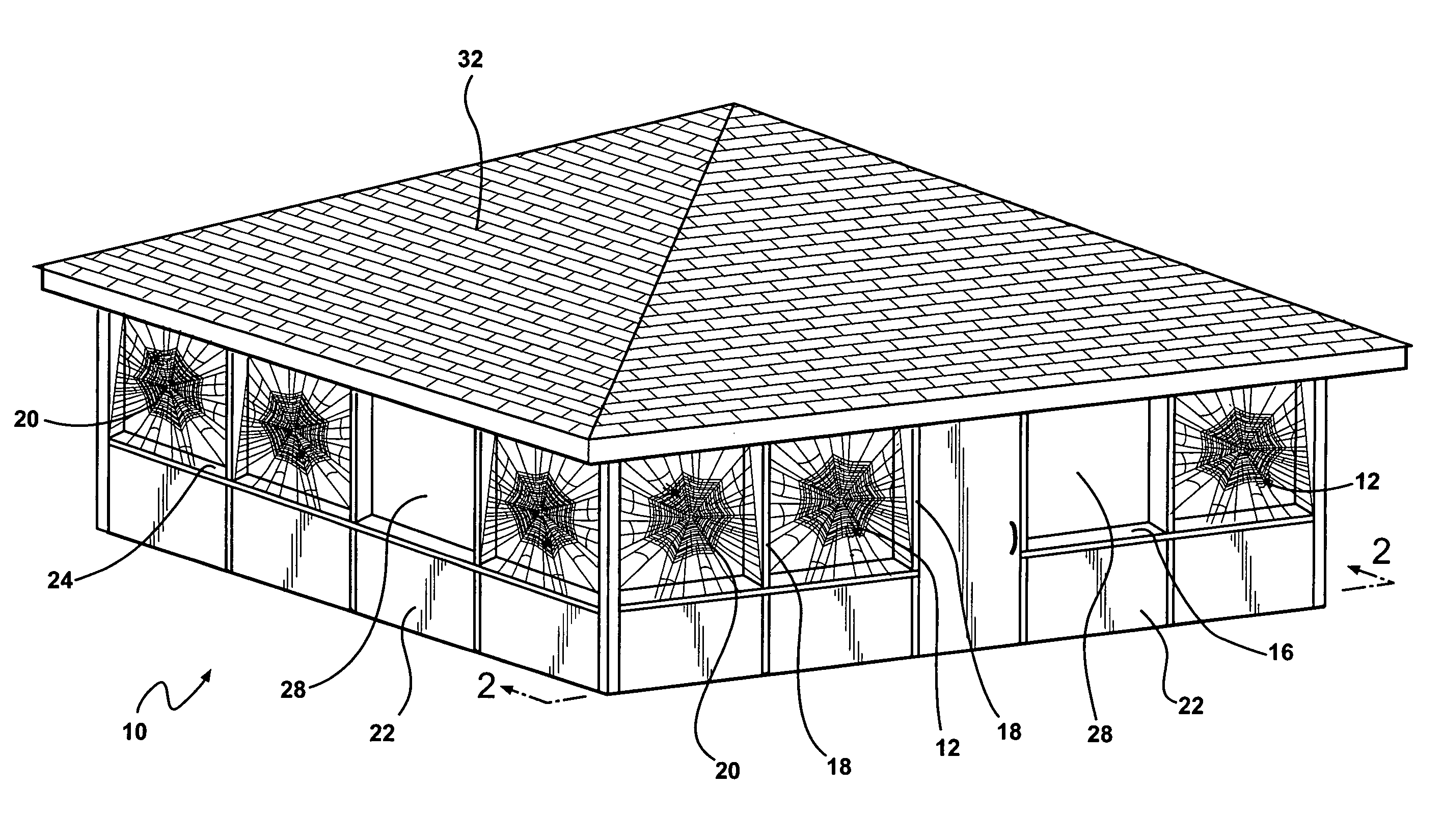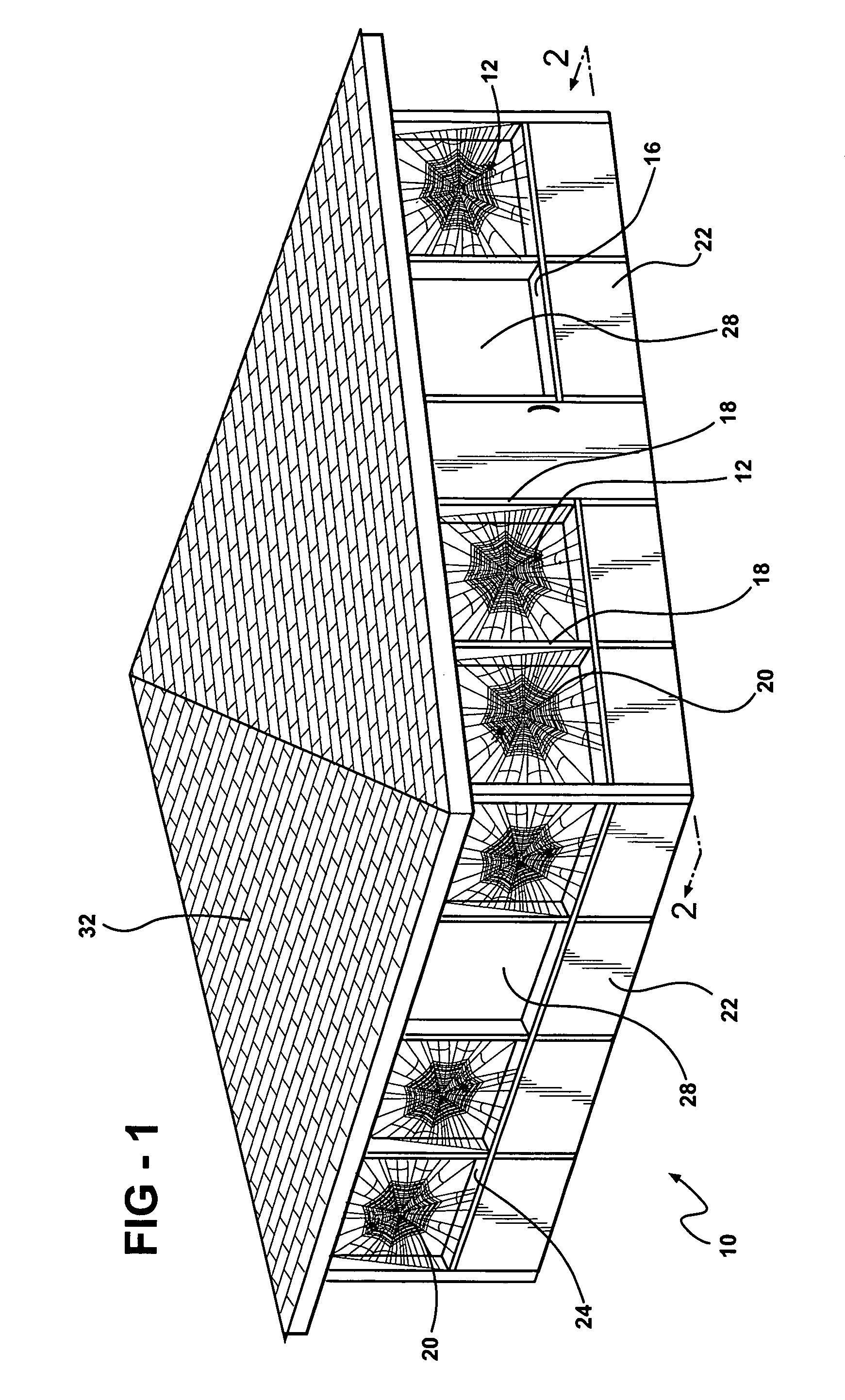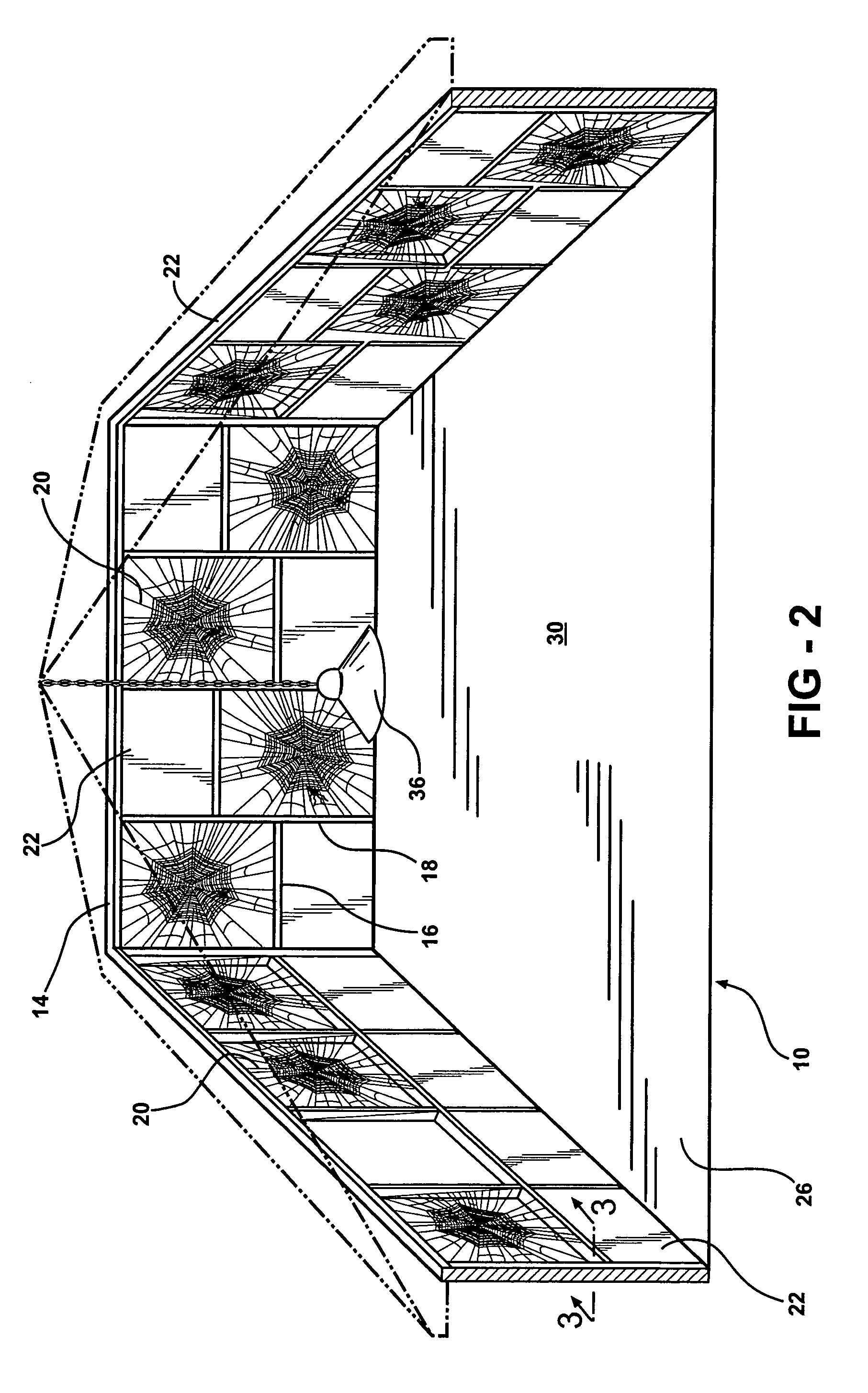Method and housing assembly for farming members of the phylum arthropoda
a technology of phylum arthropoda and housing assembly, which is applied in the field of methods and housing assemblies for farming members of the phylum arthropoda, can solve the problems of spider silk production in captivity, silk typically does not have the same physical properties as silk, and the strain of members is reduced, so as to prevent territoriality and cannibalistic tendencies of members. , the effect of reducing the stress of the members
- Summary
- Abstract
- Description
- Claims
- Application Information
AI Technical Summary
Benefits of technology
Problems solved by technology
Method used
Image
Examples
Embodiment Construction
[0017]The subject invention provides a method and a housing assembly for farming members of the Phylum Arthropoda 12 to collect silk therefrom shown generally at 10 in FIG. 1. The assembly 10 allows the members 12 to be housed in a centralized location without the members exhibiting territoriality tendencies. Specifically, the members of the Phylum Arthropoda 12 are members of the Order Araneae (Arachnida). The order of Arachnida includes spiders, all having a body divided into a cephalothorax and a short usually unsegmented abdomen, a chelicerae modified into poison fangs, leg-like pedipalpi, simple eyes, a web-spinning apparatus at the end of the abdomen, and respiratory lung sacs or tracheae in the abdomen. Preferably, the members are from the Family Araneidae and the Genus Nephila. The Family Araneidae includes spiders that spin elaborate webs 20 and including over 2,500 species. The spiders vary greatly in size; some species of Singa are about 2 mm in length, while some of the ...
PUM
 Login to View More
Login to View More Abstract
Description
Claims
Application Information
 Login to View More
Login to View More - R&D
- Intellectual Property
- Life Sciences
- Materials
- Tech Scout
- Unparalleled Data Quality
- Higher Quality Content
- 60% Fewer Hallucinations
Browse by: Latest US Patents, China's latest patents, Technical Efficacy Thesaurus, Application Domain, Technology Topic, Popular Technical Reports.
© 2025 PatSnap. All rights reserved.Legal|Privacy policy|Modern Slavery Act Transparency Statement|Sitemap|About US| Contact US: help@patsnap.com



